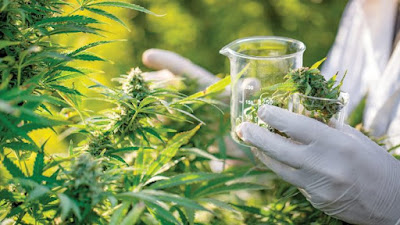What is pharmaceutical formulation? What are the stages involved?
Pharmaceutical
formulation, in
pharmaceutics, is a process in which various chemical substances, along with
the active drug, are mixed to produce a final medicinal product. The word
formulation is often used in a way that includes the dosage form used in the
making.
What
Are The Stages And Timeline?
Formulation
studies include developing a preparation of the drug which is stable as well as
acceptable to the patient. This usually involves adding the drug into a tablet
or a capsule for administered drugs. It is important to differentiate that a
tablet contains a variety of other potentially inert substances apart from the
drug itself. Further, studies have to be done to ensure that the encapsulated
drug is compatible with these other substances and will not cause harm, either
direct or indirect.
Preformulation
stage in pharma manufacturing involves the characterization of
a drug's physical, chemical, and mechanical properties to choose what other
ingredients or excipients should be used in the preparation. In dealing with
protein preformulation, the important aspect is to understand the behavior of a
given protein under different stress conditions such as freeze/thaw, shear
stress, temperature among others to identify mechanisms of degradation and
hence its mitigation.
Formulation
studies then consider these factors as particle size, pH, polymorphism, and
solubility, because all of these can influence bioavailability and in turn, the
activity of a drug. The drug should be combined with inactive ingredients by a
method to ensure that the quantity of drug added is consistent in each dosage
unit, say, each tablet. The dosage must have a uniform appearance, with an
acceptable tablet hardness, taste, and capsule disintegration.
Formulation
studies will usually not be complete by the time clinical trials commence. This
means that simple preparations are initially developed for use in phase I
clinical trials. They typically consist of hand-filled capsules having a small
amount of the medicine and a diluent. No proof of the long-term stability of
these formulations is necessary, as they will be tested in some days.
Consideration has to be given to "drug loading" which is the ratio of
the active drug to the total contents of the dose. A low drug load might result
in homogeneity problems. On the other hand, a high drug load may result in flow
problems or require big capsules if the compound shows a low bulk density.
By
the time clinical trials reach phase III, the formulation of the drug should
have been developed to be close to the preparation and should be ready to be
released for use in the market. Knowledge of stability is fundamental by this
stage, and conditions should have been developed to confirm that the drug is
stable in the formulated preparation. If it proves to be unstable, it will
invalidate the results from clinical trials since it would not be possible to
know what the actual administered dose was. Stability studies are carried out
to test if temperature, oxidation, humidity, or photolysis (ultraviolet light
or visible light) have any effect, and the drug is examined to see if any
degradation products have been formed.
Container
Closure
Formulated
drugs are typically stored in container closure systems for long periods. The
containers include blisters, vials, bottles, syringes, ampules, and cartridges.
These can be made from a variety of materials including plastic, glass, and
metal. Further, the drug may be stored as a solid, liquid, or gas. Many
organizations now provide formulation development services.
It is important to check if any
undesired interactions taking place between the drug and the container. For
example, if a plastic container is used, tests should be carried out to see
whether any of its ingredients become adsorbed on to the plastic and whether
any plasticizer, pigments, lubricants, or stabilizers come out of the plastic
into the drug. Further, adhesives for the container label should also be
tested, to make sure that they do not drain through the container into the
preparation.
For more details regarding the conference please visit:https://medicinalchemistryconferences.com/
Looking
forward for a favorable reply.
Regards
Ferruccio Steven | Program Manager | Pharmacology 2020
Larix International Pte Ltd
Contact: +65 31655042
WhatsApp: +65 3158 6820
Email:
pharmacology@medicinalchemistryconferences.com




Comments
Post a Comment